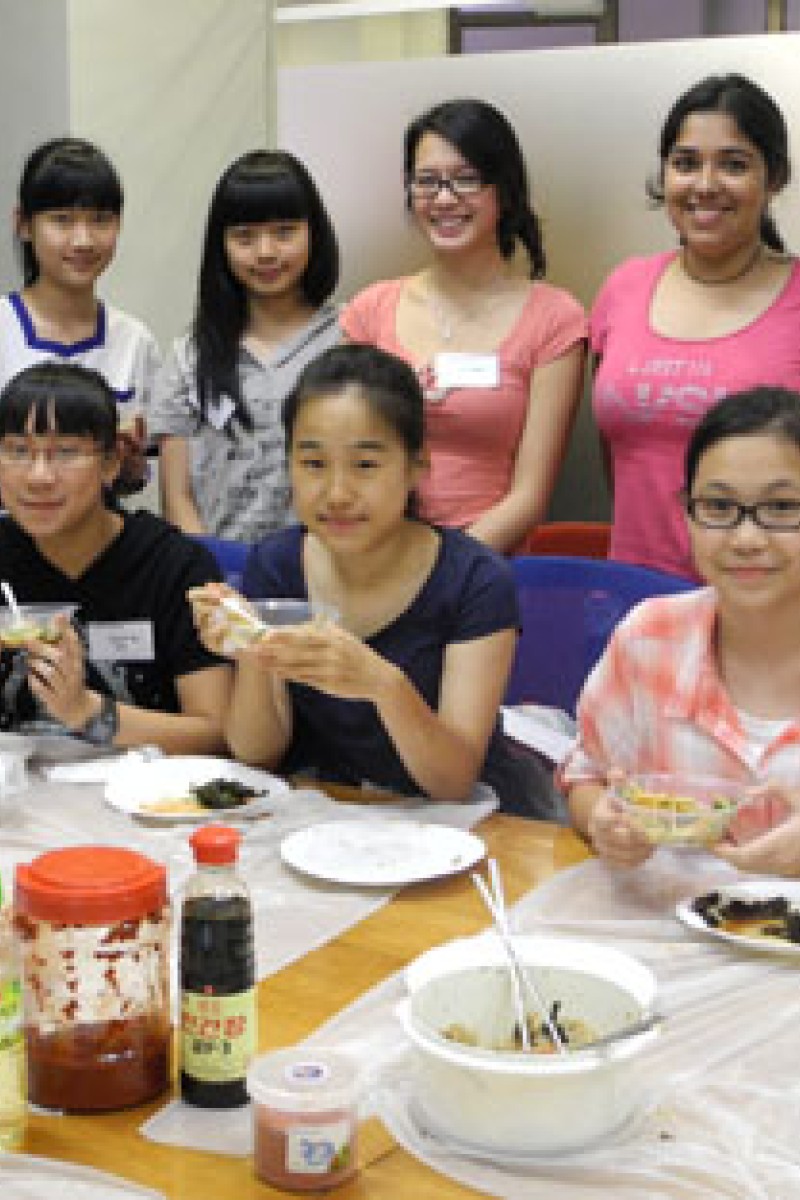
There is far more to fine Korean cooking than meets the eye (and tastebuds)

Here six of them recall their experiences.
Most people are interested in Korean culture, especially Korean cuisine, but not many of us know how to make Korean food well.
We are all Korean food buffs. At the workshop, we learned that special seasonings and sauces are essential for giving Korean food its unique taste. These include apple vinegar, Korean soy sauce (which is richer in flavour and less salty), shrimp paste and fish paste. It is the types and amounts of seasoning that makes Korean food so tasty.
The first side dish we prepared was vinegar seaweed salad. What made the seaweed so appetising even before we sampled it is that it had been freshly picked by Tiffany's mother in Korea. Tiffany reminded us to soak the seaweed in water. The seasonings that are used to make the dish are salt, apple vinegar, sugar, light soy sauce, sesame oil, chopped garlic and chopped ginger.
Next on the menu: cucumber pickles.
This cold dish contains chopped cucumber, chopped spring onions and fried and crushed sesame seeds. The seasonings to go with it are apple vinegar, sugar, and red hot chilli powder in chopped garlic.
Then came the famous kimchi - the hardest of the three dishes to make.
There are 107 types of kimchi in all. We did ours with cabbage, radish and chives. The procedure involved in making kimchi is not that difficult, but the preparation work is.
Tiffany soaked the veggies in salt water for two to three hours to soften the leaves. She then made kimchi sauce by mixing several spices together, including garlic, ginger, onion, tomato, red hot pepper powder, fish sauce, sugar, shrimp paste, fish paste and ground red hot pepper. She even included some tomato in the recipe to make the kimchi taste fresher.
At the workshop, we got to prepare our own kimchi by spreading the red sauce all over the cabbage, making sure each leaf was well-coated. We then needed to let the leaves marinate for at least three days to bring out the best flavour. The longer kimchi is allowed to mature, the sourer it will get.
Tiffany gave us some great tips about how to enhance the taste of food by choosing the right seasoning for each dish.
Different regions in Korea produce their own versions of local dishes, especially kimchi.
Tiffany also reminded us to keep our food in air-tight plastic bags and boxes. Otherwise, the strong smells will be hard to get rid of.
YP junior reporters Chatel Cheung, Stephanie Tsui, Janet Tam, Minal Daswani, Nola Yip and Ruby Leung.
Compiled by Joyee Chan.
Check out the pictures of the workshop on the YP Facebook page